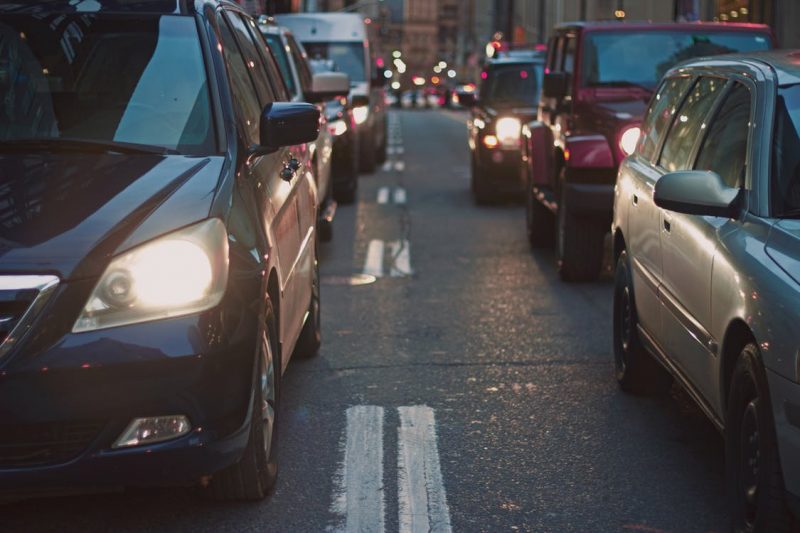Community
AAA driving survey: Do as I say, not as I do

AAA releases survey on driving, accidents, and distractions.
The 2017 Traffic Safety Culture Index reveals that while most drivers desire a greater level of security behind the wheel, their actual behaviors often contradict their attitudes about safety- creating a “do as I say, not as I do” culture on the roads. The report offers insight on drivers’ attitudes and behaviors to help the traffic safety community better understand dangers existing on roadways and identify potential countermeasures to reduce the number of crashes, injuries and deaths.
Key Findings
General
More than 1 in 5 (21.4%) drivers report having been involved in a motor vehicle crash in which someone had to go to the hospital, including 11.1% who have been seriously injured in a crash themselves.
Nearly 1 in 3 (31.6%) drivers report having had a relative who was seriously injured or killed in a motor vehicle crash.
Most drivers (87.5%) perceive that distracted drivers are a bigger problem today than in past years. Moreover, distracted driving outpaced all other issues as a growing concern. It was followed by traffic congestion at 74.5%, aggressive drivers at 68.1%, drivers using drugs at 54.9% and drunk driving at 43.4%.
Distracted Driving
Cellphone use while driving is common. In the past month, 60.5% of drivers talked on a hands-free cellphone while 49.1% talked on a hand-held cellphone. Drivers are more accepting of hands-free cellphone use (69.0%) than hand-held cellphone use (24.6%) while driving.
More view drivers texting or emailing while driving as a serious threat (96.8%) than drivers talking on cellphones (87.7%). However, in the past 30 days, 44.9% of drivers read a text message or email while driving and 34.6% of drivers typed or sent a text message or email while driving.
A majority of respondents (87.6%) support legislation against reading, typing or sending a text message or email and 73.4% of drivers support having a law against using a hand-held cellphone while driving. However, only 40.9% support an outright ban on using any type of cellphone (including hands-free) while driving.
Risky and Aggressive Driving Behaviors
Speeding on freeways and on residential streets is prevalent. Half of drivers (50.3%) reported driving 15 mph over the speed limit on a freeway and 47.6% reported driving 10 mph over the speed limit on a residential street.
There is greater social disapproval for speeding on a residential street than on freeways. Only 23.9% of drivers believe that driving 15 mph over the speed limit on a freeway is completely or somewhat acceptable while only 14.0% of motorists deem driving 10 mph over the speed limit on a residential street as acceptable.
A large portion of drivers (42.7%) admitted to driving through a stoplight that has just turned red when they could have stopped safely in the past 30 days, despite most drivers (92.9%) viewing it as an unacceptable behavior. In conjunction with this, an overwhelming majority (91.4%) of drivers perceive running red lights as a serious or somewhat serious threat to their personal safety.
Drowsy Driving
42.4% of drivers have at least one or more days when they get less than six hours of sleep in a typical week.
The majority of motorists view drowsy driving as a serious or somewhat serious threat to their safety (87.9%) and an unacceptable behavior (95.2%); yet around 3 in 10 (30.8%) admit to driving when they were so tired that they had a hard time keeping their eyes open at some point in the past month.
Impaired Driving
An overwhelming majority of drivers consider driving after drinking alcohol a serious threat to their personal safety (94.3%). However, 13.5% reported driving at least once in the past year when they thought their alcohol levels might have been close to or possibly over the legal limit.
A majority of drivers (90.8%) perceive people driving after using illegal drugs to be either a very serious threat or a somewhat serious threat to their personal safety.
Most respondents supported requiring alcohol-ignition interlocks for drivers convicted of DWI, even for first time offenders (79.9%); requiring built-in interlocks for all new vehicles (73.0%) and having a per se law for marijuana (82.9%).
-

 Community7 years ago
Community7 years agoNational Shrine of La Salette Festival of Lights 2017 set to begin
-

 Community6 years ago
Community6 years agoMassachusetts State Police looking for good home for retired dogs
-

 Crime6 years ago
Crime6 years agoFall River ranked most dangerous city in Massachusetts according to report
-

 latest7 years ago
latest7 years agoDurfee student allegedly overdoses on marijuana
-

 Community6 years ago
Community6 years agoVideo of Fall River Police goes viral
-

 Causes6 years ago
Causes6 years agoMissing Fall River woman found deceased
-

 Crime6 years ago
Crime6 years agoFall River Police add names to most wanted list
-

 Causes6 years ago
Causes6 years agoFall River teenager reported missing has been found




